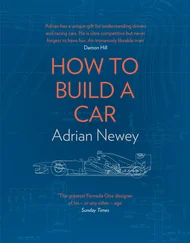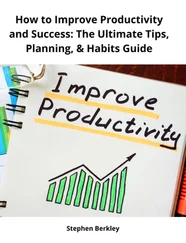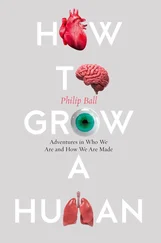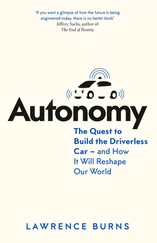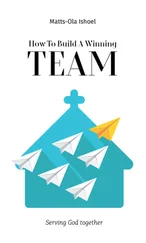Eyal, Nir - Hooked - How to Build Habit-Forming Products
Здесь есть возможность читать онлайн «Eyal, Nir - Hooked - How to Build Habit-Forming Products» весь текст электронной книги совершенно бесплатно (целиком полную версию без сокращений). В некоторых случаях можно слушать аудио, скачать через торрент в формате fb2 и присутствует краткое содержание. Год выпуска: 2014, Издательство: Nir Eyal, Жанр: Старинная литература, на английском языке. Описание произведения, (предисловие) а так же отзывы посетителей доступны на портале библиотеки ЛибКат.
- Название:Hooked: How to Build Habit-Forming Products
- Автор:
- Издательство:Nir Eyal
- Жанр:
- Год:2014
- ISBN:нет данных
- Рейтинг книги:5 / 5. Голосов: 1
-
Избранное:Добавить в избранное
- Отзывы:
-
Ваша оценка:
- 100
- 1
- 2
- 3
- 4
- 5
Hooked: How to Build Habit-Forming Products: краткое содержание, описание и аннотация
Предлагаем к чтению аннотацию, описание, краткое содержание или предисловие (зависит от того, что написал сам автор книги «Hooked: How to Build Habit-Forming Products»). Если вы не нашли необходимую информацию о книге — напишите в комментариях, мы постараемся отыскать её.
Hooked: How to Build Habit-Forming Products — читать онлайн бесплатно полную книгу (весь текст) целиком
Ниже представлен текст книги, разбитый по страницам. Система сохранения места последней прочитанной страницы, позволяет с удобством читать онлайн бесплатно книгу «Hooked: How to Build Habit-Forming Products», без необходимости каждый раз заново искать на чём Вы остановились. Поставьте закладку, и сможете в любой момент перейти на страницу, на которой закончили чтение.
Интервал:
Закладка:
Building for Triggers
Products that successfully create habits soothe the user’s pain by laying claim to a particular feeling. To do so, product designers must know their user's internal triggers — that is, the pain they seek to solve. But finding customers’ internal triggers requires learning more about people than what they can tell you in a survey. It requires digging deeper to understand how your users feel.
The ultimate goal of a habit-forming product is to solve the user’s pain by creating an association so that the user identifies the company’s product or service as the source of relief.
First, the company must identify the particular frustration or pain-point in emotional terms, rather than product features. But how does a designer go about uncovering the source of a user’s pain? The best place to start is to learn the drivers behind successful habit-forming products — not to copy them, but to understand how they solve users’ problems. Doing so will give you practice in diving deeper into the mind of the consumer and alert you to common human needs and desires.
As Evan Williams, co-founder of Blogger and Twitter said, the Internet is, “a giant machine designed to give people what they want.” [xlviii]Williams continued, “We often think the Internet enables you to do new things … But people just want to do the same things they’ve always done.”
These common needs are timeless and universal. But talking to users to reveal these wants will likely prove ineffective since they themselves don’t know which emotions motivate them. People just don’t think in these terms. You’ll often find that people’s “declared preferences” — what they say they want — are far different from their “revealed preferences” — what they actually do.
As Erika Hall, author of Just Enough Research writes, “When the research focuses on what people actually do (watch cat videos) rather than what they wish they did (produce cinema-quality home movies) it actually expands possibilities.” [xlix]Looking for discrepancies exposes opportunities. Why do people really send SMS messages? Why do they take photos? What role does watching television or sports play in their lives? Ask yourself what pain these habits solve and what the user might be feeling right before one of these actions.
What would your user want to achieve by using your solution? Where and when will they use it? What emotions influence their use and will trigger them to action?
Jack Dorsey, co-founder of Twitter and Square, shared how his companies answer these important questions, “[If] you want to build a product that is relevant to folks, you need to put yourself in their shoes and you need to write a story from their side. So, we spend a lot of time writing what's called user narratives.” [l]
Dorsey goes on to describe how he tries to truly understand his user, “He is in the middle of Chicago and they go to a coffee store ... This is the experience they're going to have. It reads like a play. It's really, really beautiful. If you do that story well, then all of the prioritization, all of the product, all of the design and all the coordination that you need to do with these products just falls out naturally because you can edit the story and everyone can relate to the story from all levels of the organization, engineers to operations to support to designers to the business side of the house.”
Dorsey believes a clear description of users — their desires, emotions, the context with which they use the product — is paramount to building the right solution. In addition to Dorsey's user narratives, tools like customer development, [li]usability studies, and empathy maps [lii]are examples of methods for learning about potential users.
One method is to try asking the question "why" as many times as it takes to get to an emotion. Usually this will happen by the fifth “why.” This is a technique adapted from the Toyota Production System described by Taiichi Ohno as the “5 Whys Method.” Ohno wrote that it was "the basis of Toyota's scientific approach ... by repeating ‘why?’ five times, the nature of the problem as well as its solution becomes clear." [liii]
When it comes to figuring out why people use habit-forming products, internal triggers are the root cause, and “why?” is a question that can help drill right to the core.
For example, let's say we're building a fancy new technology called email for the first time. The target user is a busy middle manager named Julie. We've built a detailed narrative of our user, Julie, that helps us answer the following series of "whys:"
Why #1: Why would Julie want to use email?
Answer: So she can send and receive messages.
Why #2: Why would she want to do that?
Answer: Because she wants to share and receive information quickly.
Why #3: Why does she want to do that?
Answer: To know what’s going on in the lives of her co-workers, friends, and family.
Why #4: Why does she need to know that?
Answer: To know if someone needs her.
Why #5: Why would she care about that?
Answer: She fears being out of the loop.
Now we've got something! Fear is a powerful internal trigger and we can design our solution to help calm Julie’s fear. Of course, we might have come to another conclusion by starting with a different persona, varying the narrative or coming up with different hypothetical answers along the chain of "whys.” Only an accurate understanding of our user's underlying needs can inform the product requirements.
But now that we have an understanding of the user’s pain, we can move on to the next step of testing our product to see if it solves her problem.
Unpacking Instagram’s Triggers
A large component of Instagram’s success — and what brings its millions of users back nearly every day — is the company’s ability to understand its users’ triggers. For people like Yin, Instagram is a harbor for emotions and inspirations, a virtual memoir preserved in pixels.
Yin’s habitual use of the service started with an external trigger - a recommendation from a friend and weeks of repetitious use before she became a regular user.
Every time Yin snaps a picture, she shares it with her friends on Facebook and Twitter. Consider the first time you saw an Instagram photo. Did it catch your attention? Did it make you curious? Did it call you to action?
These photos serve as a relationship external trigger , raising awareness and serving as a cue for others to install and use the app. But Instagram photos shared on Facebook and Twitter were not the only external triggers driving new users. Others learned of the app from the media and bloggers, or through the featured placement Apple granted Instagram in the App Store — all earned external triggers .
Once installed, Instagram benefited from owned external triggers . The app icon on users’ phone screens and push notifications about their friends’ postings served to call them back.
With repeated use, Instagram formed strong associations with internal triggers, and what was once a brief distraction became an intraday routine for many users.
It is the fear of losing a special moment that instigates a pang of stress. This negative emotion is the internal trigger that brings Instagram users back to the app to alleviate this pain by capturing a photo. As users continue to use the service, new internal triggers form.
But Instagram is more than a camera replacement, it is a social network. The app helps users dispel boredom by connecting them with others, sharing photos, and swapping lighthearted banter. [liv]
Like many social networking sites, Instagram also alleviates the increasingly recognizable “pain” known as “fear of missing out,” or FOMO. For Instagram, associations with internal triggers provide a foundation to form new habits.
Читать дальшеИнтервал:
Закладка:
Похожие книги на «Hooked: How to Build Habit-Forming Products»
Представляем Вашему вниманию похожие книги на «Hooked: How to Build Habit-Forming Products» списком для выбора. Мы отобрали схожую по названию и смыслу литературу в надежде предоставить читателям больше вариантов отыскать новые, интересные, ещё непрочитанные произведения.
Обсуждение, отзывы о книге «Hooked: How to Build Habit-Forming Products» и просто собственные мнения читателей. Оставьте ваши комментарии, напишите, что Вы думаете о произведении, его смысле или главных героях. Укажите что конкретно понравилось, а что нет, и почему Вы так считаете.


